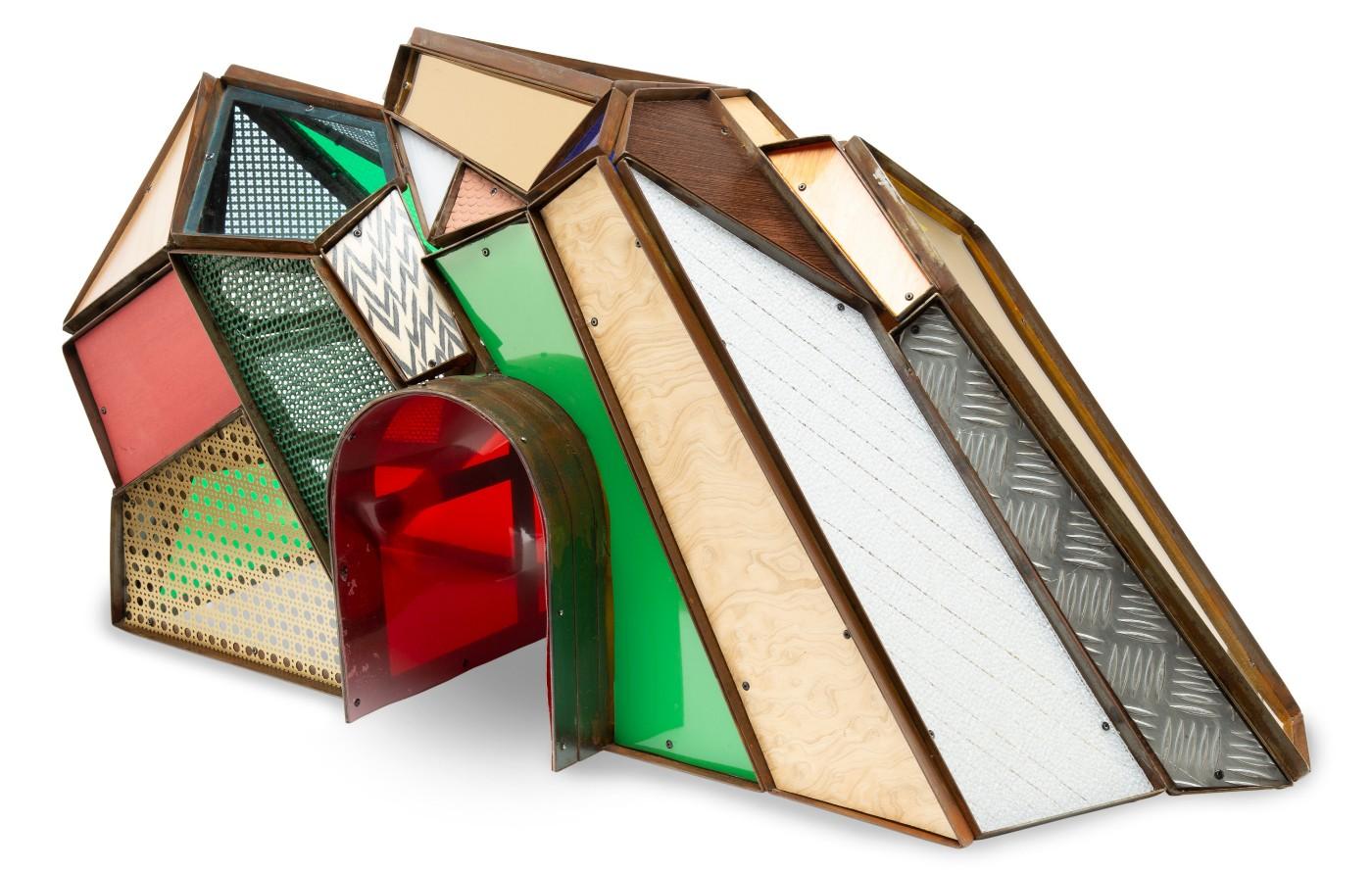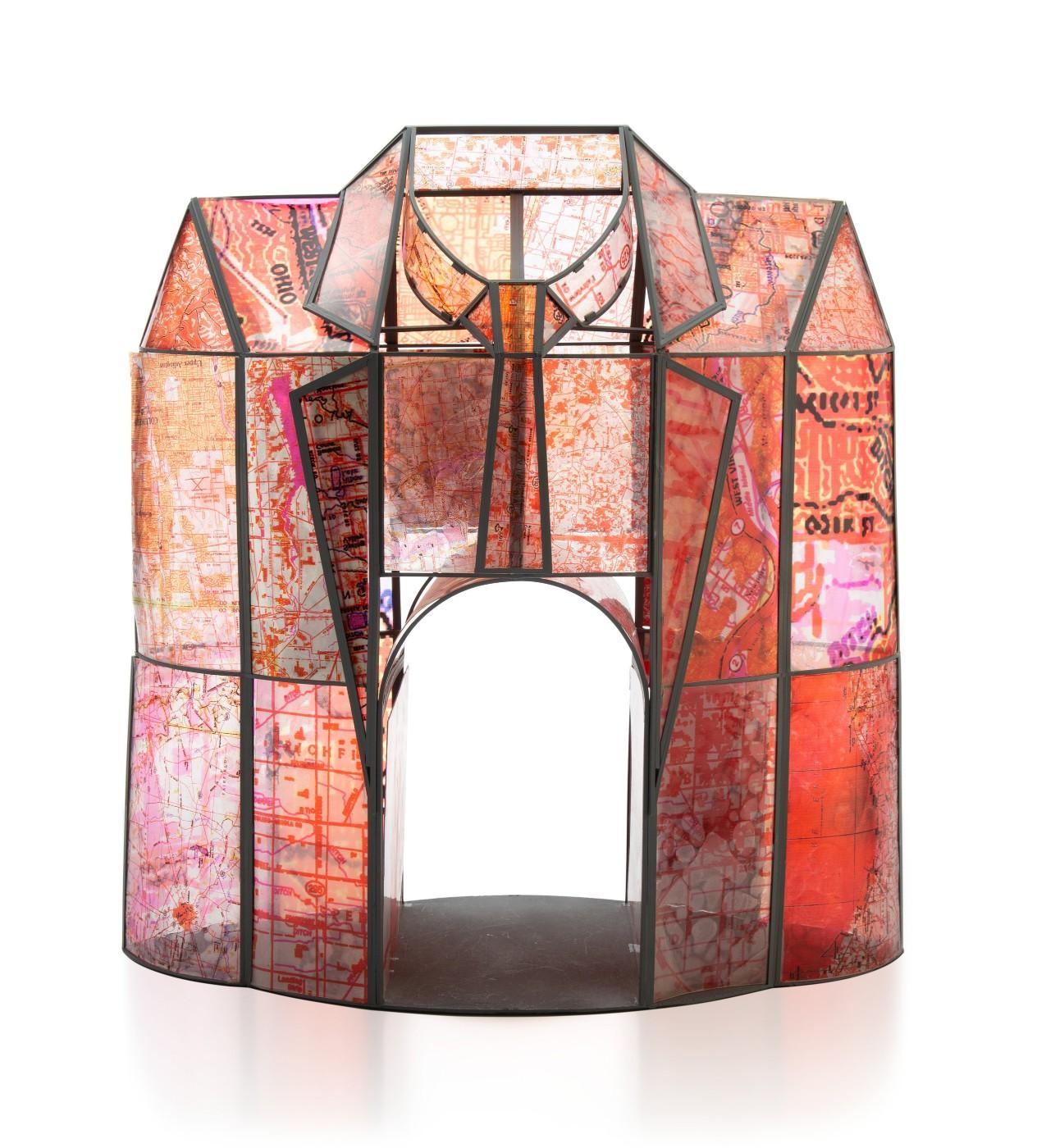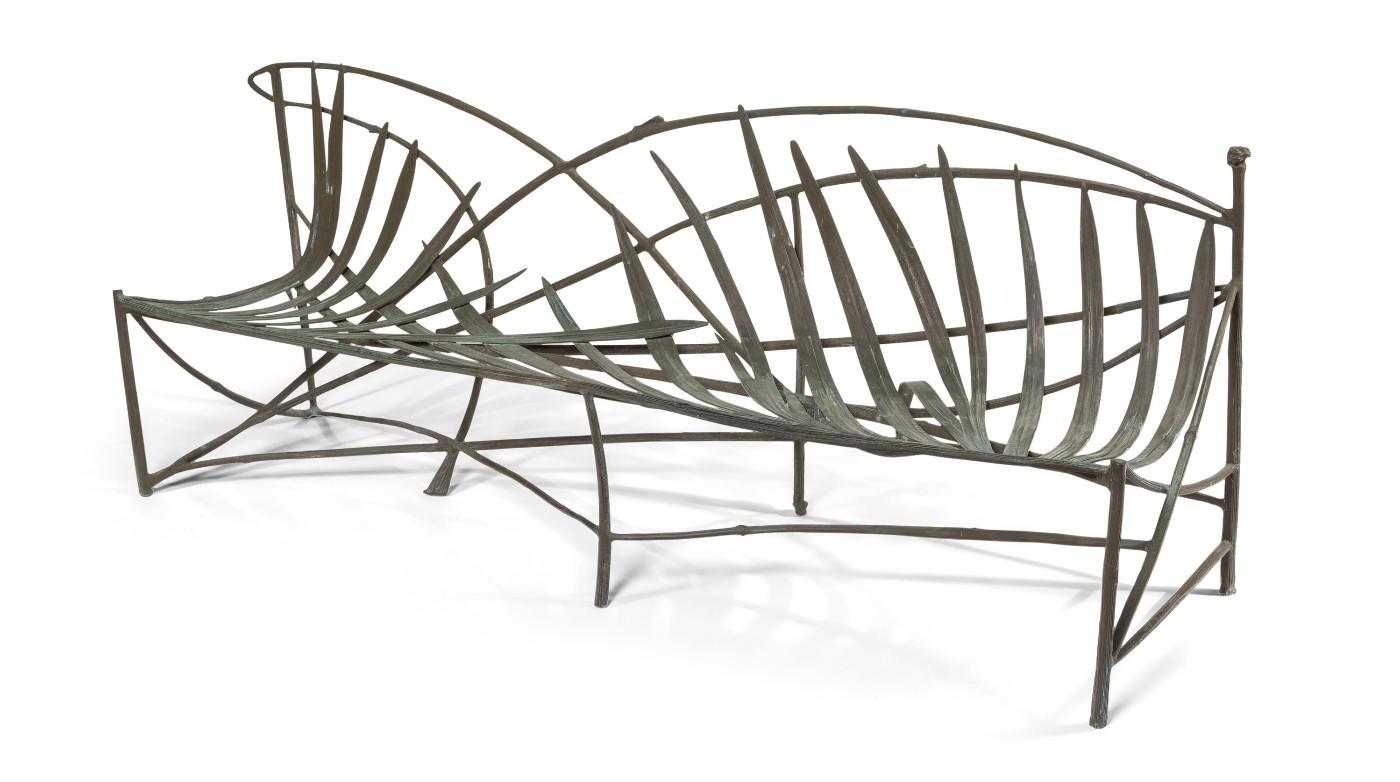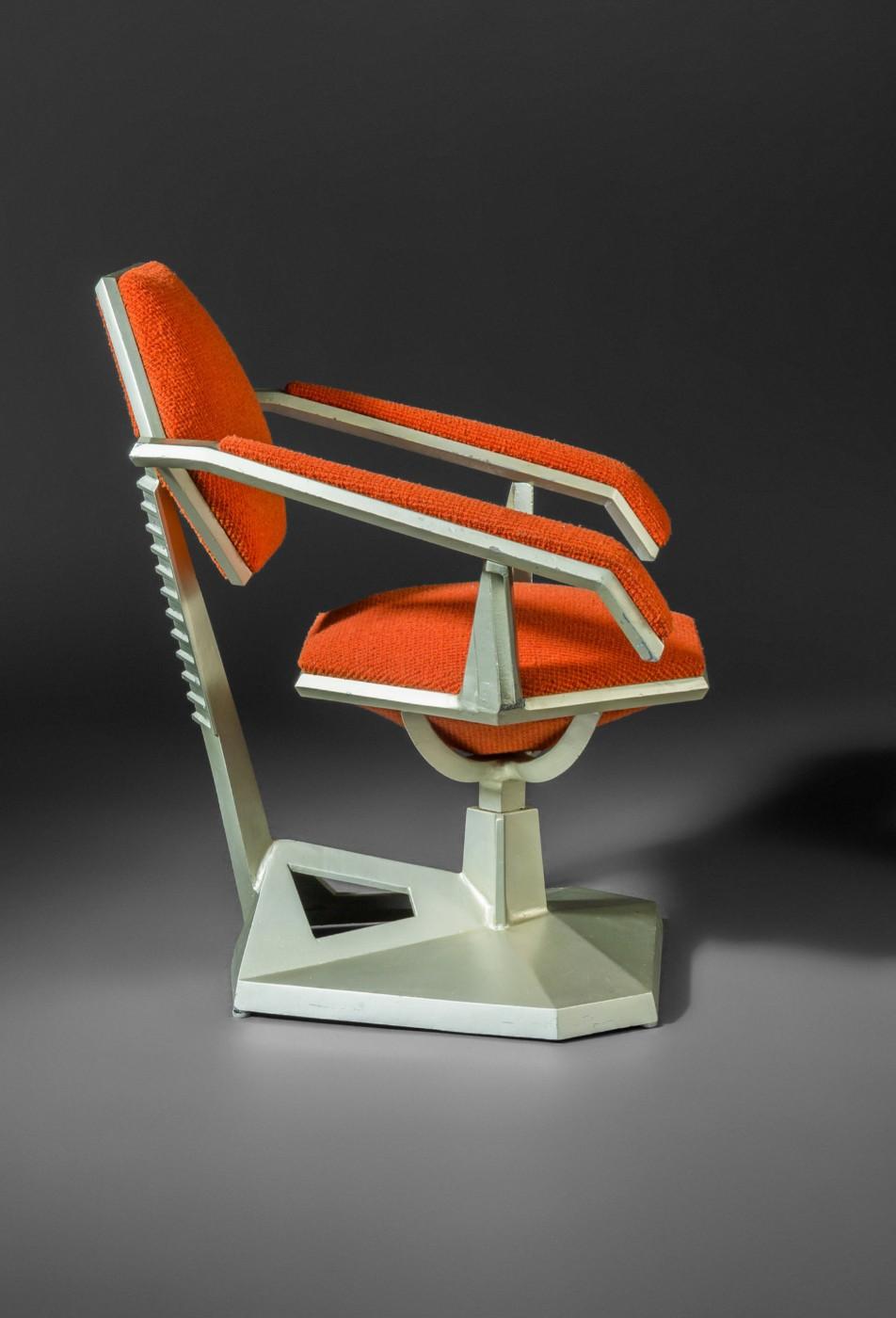Among the highlights of the Oppenheim collection in the sale is Dennis Oppenheim Viewing Station #1, 1967 (estimate: $3,000-5,000) is from a series of models that constitute his first deliberate move beyond the gallery context to addressing outdoor space. Viewing Station #1 consists of a four-sided square base structure that tapers up to a smaller platform for viewing land. Oppenheim said he did Viewing Stations, on which people could stand to look at land and excavated structures. The Viewing Stations, he said, prioritized the action of seeing while playing down the centrality of an actual object created to facilitate the experience of the work.
Dennis Oppenheim Entrance Piece, 2002 (estimate: $3,000-5,000) is a model for Entrance, which was built in 2004 in Tempe, Arizona, and Entrance Piece, which was built in 2005 in Taoyuan City, Taiwan. This model also relates to Entrance to a Garden, part of Oppenheim’s large-scale works at the Storm King Art Center in New Windsor, New York, in 2016. Through this work, Oppenheim beautifully fuses art, architecture and fashion.
Engagement, 1997 (estimate: $3,000-5,000) is one of Oppenheim’s most recognizable works. The model for a series of outdoor sculptures depicting two large-scale steel rings topped with houses tilting away from each other. The rings evoke images of solitaire diamond engagement rings, in an homage to the institution of marriage and its complexities. Individual versions are featured in the Helsinki City Art Museum in Finland and the Nevada Museum of Art in Reno, and has been displayed as a public art project in a range of cities, including New York, Hong Kong, San Diego, California and Vancouver, Canada.
Variation on a Device to Root Out Evil, 1997 (estimate: $3,000-5,000) relates to one of Oppenheim’s most well-known large-scale outdoor sculptures, Device to Root Out Evil, which was exhibited at the 1997 Venice Biennale and the 2007 Vancouver Biennale, and is in the Collections of the City of Palma de Mallorca, Spain and The Denver Art Museum in Colorado. The metal and glass work portrays an upside-down early rural New England-style church precariously balanced on the tip of its steeple, which is buried in the ground.
“Price Tower is showing work that moves from conventional sculpture toward something I feel to be the beginnings of a new sculpture/architecture hybrid,” Oppenheim said at the time of his donation of his works.
































